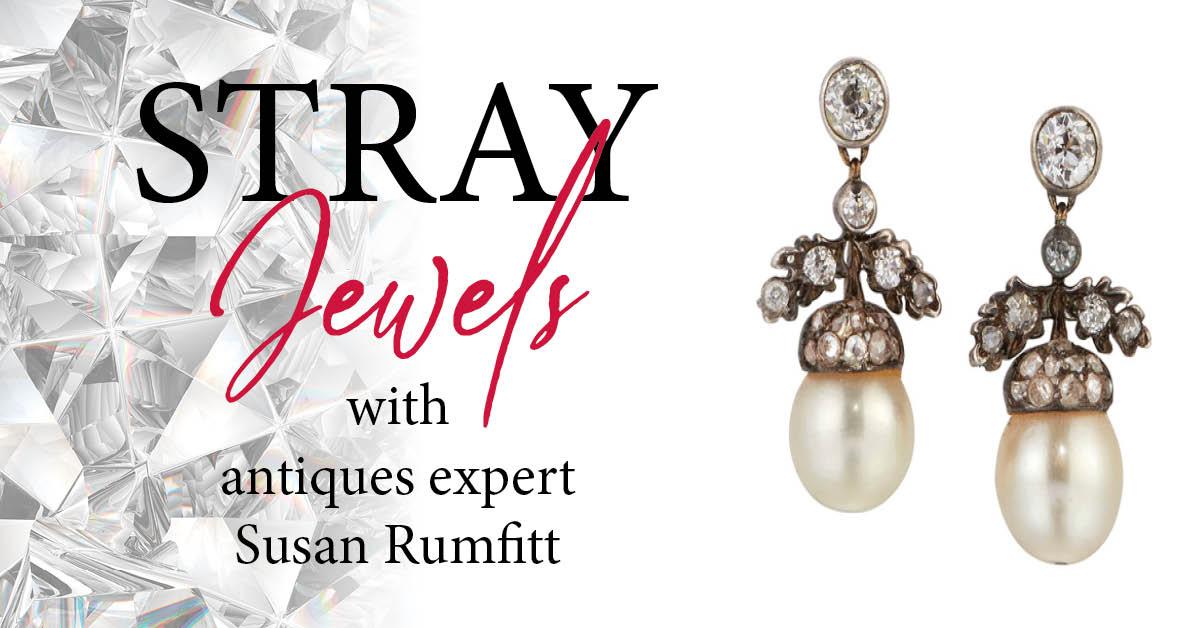Subscribe to trusted local news
In a time of both misinformation and too much information, quality journalism is more crucial than ever. By subscribing, you can help us get the story right.
- Subscription costs less than £1 a week with an annual plan.
Already a subscriber? Log in here.
27
Mar 2021
Stray Jewels with Susan Rumfitt: the timeless allure of pearls


 Stray Jewels is a monthly column written by BBC Antiques Roadshow jewellery specialist, Susan Rumfitt. Susan started her career working for Christie’s auctioneers in Glasgow before establishing her own jewellery department, The Gallery in Harrogate.
Stray Jewels is a monthly column written by BBC Antiques Roadshow jewellery specialist, Susan Rumfitt. Susan started her career working for Christie’s auctioneers in Glasgow before establishing her own jewellery department, The Gallery in Harrogate.
In 2006, she joined the Antiques Roadshow and has since built up an extensive knowledge of and passion for fine jewellery.
Many feel that pearls are old fashioned, but they have been worn by many style icons, including Marilyn Monroe, Grace Kelly, Elizabeth Taylor and Michelle Obama and sale results continue to show pearls are very much in vogue.
In 2011 Elizabeth Taylor’s Collection of jewellery came up for auction. The price of one necklace shocked the world. It contained a pearl that had once belonged to Mary I of England, known as ‘La Peregrina’. Richard Burton had bought the pearl at auction in 1969 for $37,000 as a Valentine Day’s gift for Elizabeth. She had it remounted by Cartier. In 2011 against a pre-sale estimate of $2,000,000 - $3,000,000 , it sold for just over $11 million. This sent the pearl world into a frenzy! From auction houses to the high street, pearls became highly prized and highly priced. The market has settled down over the last few years but premium prices can still be achieved for the finest examples, especially when they are accompanied by certificates to state that they are natural pearls or if made by important designers. In their sale Elstob & Elstob had a pearl, sapphire and diamond necklace by the award winning jewellery designers De Vrooman which sold for £2,200. A sophisticated look with exceptional cultured pearls.
What are pearls?
A natural pearl forms when a parasite or some other foreign matter enters the oyster or mussel shell. The mollusc then deposits layers of nacre around the intruder to soothe the irritation. Nacre is made up of a combination of calcium carbonate, conchiolin and water. Cultured pearls are farmed and the irritation is started by introducing a piece of shell (or mantle) into the pearl – hence the name ‘cultured’. Natural can pearls still command an exceptionally high price but I’ve not heard of anyone exchanging pearls for property recently, as the jewellers Cartier did in 1916, in New York. The necklace in question was valued at over $1 million. Masie and Morton Plant saw the necklace in the window and agreed to swap their mansion on Fifth Avenue for the necklace. The introduction of cultured pearls by Kokichi Mikimoto made pearls available to the masses and as a result natural pearl market suffered and in 1956 when Maisey’s necklace came up for auction it made $150,000!
Cultured pearls today
There are an abundance of cultured pearls available today. Saltwater Akoya pearls remain popular, mainly from Japan and China. South Sea and Tahitian pearls are all popular but can be quite expensive. Cultured pearls from Japan have made larger pearls more accessible and more affordable than the warm water varieties.
What to look for when buying pearls
When buying natural pearls it is very important that they are accompanied by a laboratory certificate Elstob & Elstob sold two lovely pairs of natural saltwater pearl earrings. Both had good a lustre (shine) and surface condition. The Pearls also matched well in each pair. Whether natural or cultured uniformity in size and shape is key. This will help to maintain value. Smaller pearls are also popular especially when set in pretty pendants such as the enamel and diamond example illustrated. This dates from the Edwardian period and the central pearl was also accompanied by a certificate. This helped it reach its sale value of £3,200.
Looking after pearls
The oils in our skin help the pearls to look shiny and enhance the lustre when we wear them, but at the same time the oils are destructive to the pearls. Once you have worn pearls its is really important to wipe them before you put them back in the box. Pearls don’t have the hardness or durability of many gemstones, so we really do need to treat them gently.
Read More:
- Stray Jewels with Susan Rumfitt: Amethyst and Aquamarine
- Stray Jewels with Susan Rumfitt: Gifts for the one you love
0